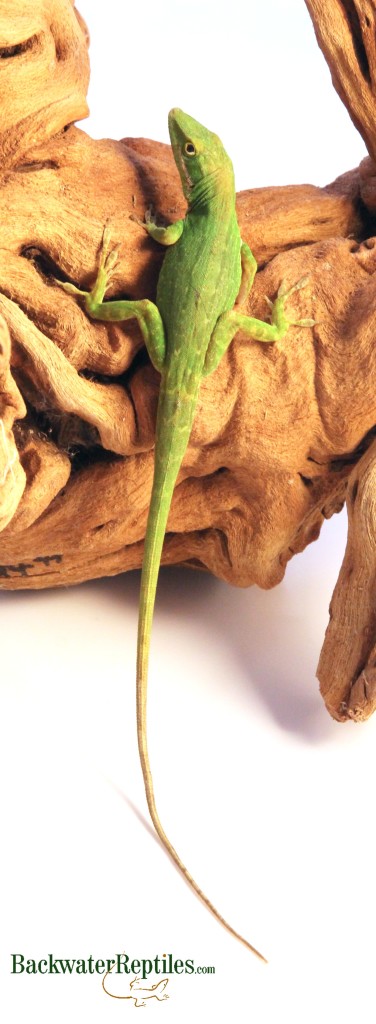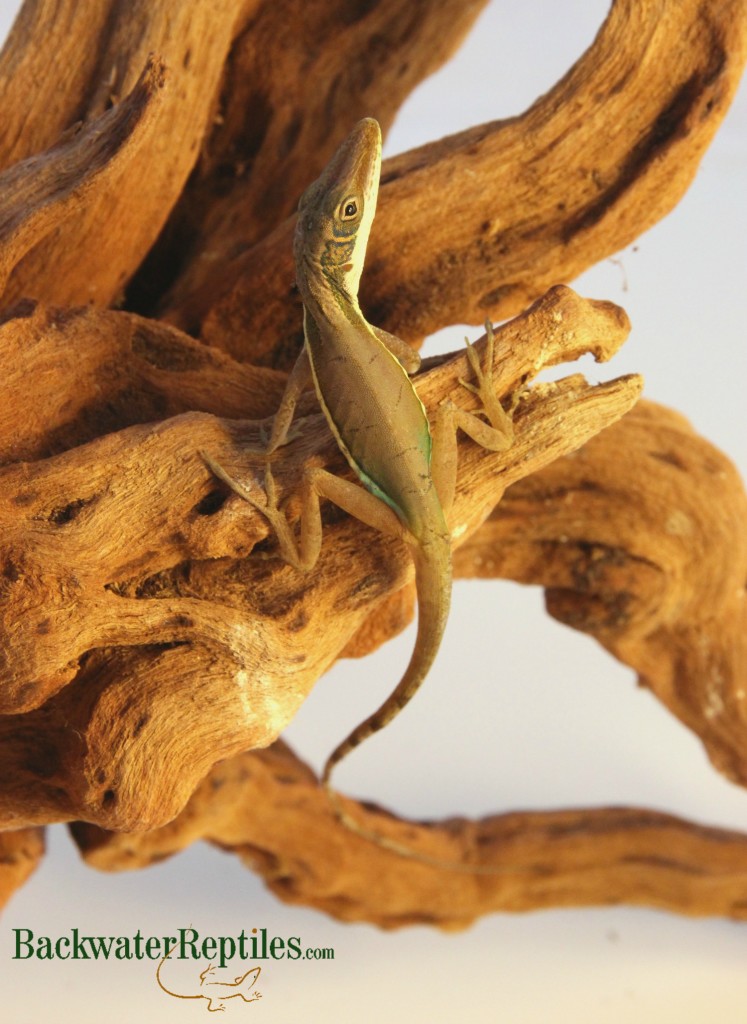If you’re wondering what the best pet anole lizards are, you’re not alone. Anoles are very common pet lizards and are especially popular with those who are new to keeping pet reptiles. This is because they are small, easy to care for, and very pretty to look at.
I remember being a kid at the local pet store, and they would always have a tank full of Green anoles. I thoroughly enjoyed keeping them as pets, but back then, I had no idea the world of anoles was so large.
Did you know that there are many species of anoles that make great pets, even though the green anole (Anolis carolinensis) is the most widely available in pet stores?
In this blog entry, we’ll discuss the top four anole species we think make the best pets, excluding the very common green anole (Anolis carolinensis) and brown anole (Anolis sagrei), which both make excellent pets.
Big Head Anole (Anolis cybotes)

Bet you can’t guess where this species gets its common name? Yes, it’s because the males possess unusually large heads…at least by anole standards.
These anoles range in color from brown to tan to reddish-brown or even grey. The males also sometimes possess a bright green stripe that runs along the sides of their bodies. Their dewlaps also tend to be larger and they can also have small head and neck crests.
Cuban Knight Anole (Anolis equestris)

Cuban Knight anoles are known for their voracious appetites. If you enjoy making feeding time a spectacle, then a Knight anole might be a good fit as these little lizards are definitely not picky eaters.
You can recognize a Cuban Knight anole mainly by its size. These anoles are definitely one of the larger species and can reach lengths up to 18 inches in captivity, although 12 to 15 inches is a more common size.
These anoles are bright green in color and have white stripes and patches. As they grow, the white becomes more yellow in color, and their heads become massive in relation to their overall body–almost comically so.
Knight anoles eat insects and can’t be housed with smaller critters (including smaller anoles) because they’ll make a meal out of them! Starting with a young specimen is always a plus.
Haitian White-Lipped Anole (Anolis coelestinus)

The White-lipped Anole is named after the white stripe that runs along its lip and down its shoulder area. It is a mid-size anole with a reasonable temperament, although like most anole species, it is still a rather flighty lizard.
This species attains a longer, stockier size than it’s cousin the Green anole, making them a hearty pet. They love crickets and waxworms.
The care requirements for this anole don’t vary much from those of the common Green Anole as they occupy the same type of habitats and eat the same type of foods.
Henderson Anole (Anolis hendersoni)

The Henderson Anole is a bit harder to come by in the pet trade.
They tend to be brown or gray in coloration with lighter sides and underbelly. They possess very long, triangular heads. Above their hind legs, they have a bright green/teal spot. They’ve got a very unique appearance.
Like all anoles, the Henderson anole requires an enclosure that provides it more vertical, climbing space instead of horizontal, floor space. They eat insects and do better when they’re being observed than when they are being handled.
Each of the anoles we’ve covered will do best with some UVB lighting–we recommend the ReptiSun 5.0 bulbs, as they have served our reptiles well.
Conclusion
All of these anole lizards make fascinating and entertaining pets. Just keep in mind that although they are pretty easy to care for, they are not very hands on pets and can be skittish. In other words, don’t be surprised if your anole doesn’t enjoy being held and taken out of its enclosure. This is true of nearly all anoles.
Still interested in a pet anole? Backwater Reptiles has all of these species of anoles for sale and more.
